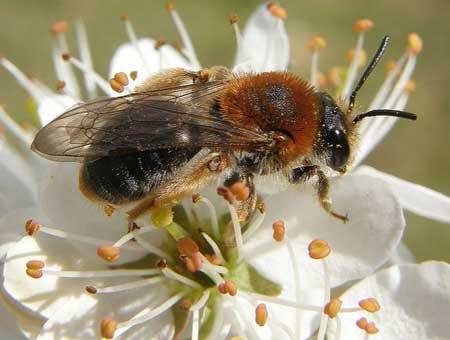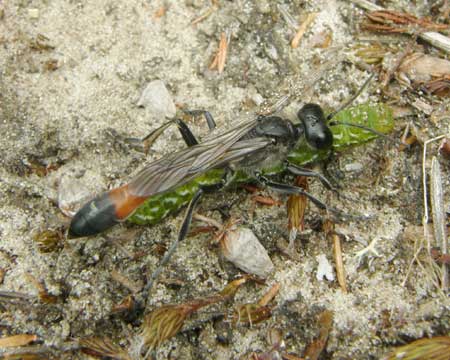| PROJECTS |

Andrena haemorrhoa
Photo: Steven Falk |
National Pollinator and Pollination Monitoring Strategy
In 2015 Hymettus will be working with a wide range of partners led by the Centre for Ecology & Hydrology, Leeds University and Reading University to develop and test a new systematic and sustainable framework for monitoring the status of pollinators and the services they provide. Initial work in 2014 has identified what is to be measured and which methods are most likely to be successful. Hymettus will be involved in field testing of protocols in 2015.
The January 2019 POMs Newsletter is available to download here
|
Re-finding the Mountain Mason Bee
If an application to Scottish Natural Heritage is successful Hymettus will begin work on the mason bee Osmia inermis in the Scottish Highlands once the weather is suitable in spring 2015 and continue through to autumn 2016. The initial aim will be to try and relocate colonies of the bee at previously known sites using a trap upturned terracotta saucers as trap nests. This approach was developed in Canada where 10% of the saucers were reported to be used, significantly higher than the success rate of previous surveys using natural stones as trap nests in Scotland. |
Ecology and distribution of the leafhopper Doratura impudica
In a Defra funded project running from 2010 to 2011 the ecology of this bug was investigated in detail. Prior to the study it was recorded from just six locations in Norfolk and Kent. New sites were found during the study but none were outside the known range. The preferred habitat of Doratura impudica was found to be the extreme seaward edge of coastal sand dunes. It was found only in areas where sand couch, Elymus farctus, dominated the plant community in a narrow zone between bare sand at the top of the beach and stabilized dune dominated by marram grass. Sand couch is now assumed to be the bug’s host plant. A grant from The Redwing Trust in 2013 allowed the refined knowledge of habitat to be used when searching for D. impudica on dune systems in SW England and S Wales but no new sites were found but visits to the Lincolnshire coast in 2014 extended its range to Gibraltar Point and Seacroft. |
| The digger wasp Ammophila pubescens – one or two species in Britain? |

Ammophila pubescens with prey
Photo: Steven Falk |
This two year project was supported through a grant from The Redwing Trust. In 2012 and 2013 the nest provisioning behaviour of this wasp was studied in an isolated population at Kelling, Previously observed differences in the range of prey taken, nest-provisioning and levels of intra-species parasitism between the populations were confirmed by the study. These differences raised the question of whether our UK populations could represent different species but non-destructive DNA sampling (by removal of a single antenna) suggested that although there were significant differences between the wasp populations from all three sites, only a single species was involved.
|

